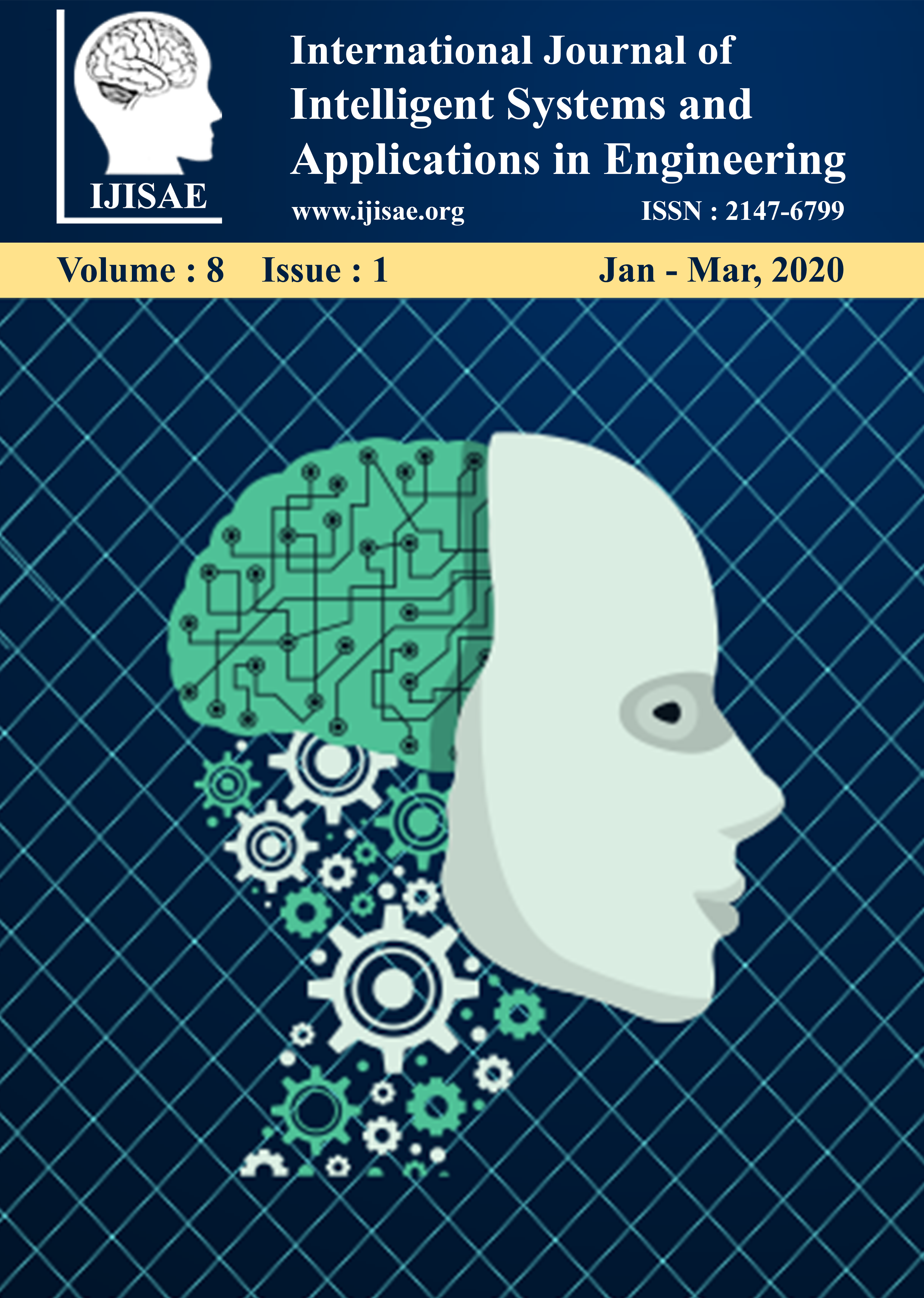A Theme of Smart Cities Based on IOT, Fuzzy Logic and Quantum-Deep Learning Technique
DOI:
https://doi.org/10.18201/ijisae.2020158885Keywords:
Internet Of Things, Smart City, Sensor Network, RFIDAbstract
In near future the human civilization would converge to urban places. Hence, tomorrows' cities would be highly dense. Thus in future it would be great challenges to provide efficient services to citizens. In this context this manuscript has proposed an efficient architecture of different applications of smart cities using Internet of Things (IOT), Fuzzy Logic. Moreover, an efficient architecture based on service oriented architecture(SOA) has been proposed here. Furthermore, an integrated intelligent smart city services framework has been proposed here which can forecast different activities based on Quantum Deep Learning concept. Simulated results have been shown to lay bare the effectiveness of the proposed approach.
Downloads
References
Petrolo R, Loseri V, Mitton N, Towards a smart city based on cloud of thinds, in Proceedings of the 2014 SCM International Workshop on Wireless and Mobile Technologies for Smart Cities – WiMobCity ’14, New Yourk, USA: ACM Press (2014) p, 61-66 doi.10.1145/2633661.2633667.
Sheng Q. Z, Zeadally S., Luo Z., Chung J. and Maamar Z., Ubiquitous RFID: Where are we? , journal of Information Systems Frontiers, Vol.12, No. 5 (November 2010) pp.485.
Friedewald M., Raabe O. (May 29011) ‘Ubiquitous computing: An overview of technology] impacts’, Journal of Telematics and Informatics, Vol. 28, No 2, pp. 55.
Pang Z., Technologies and Achitectures of the Internet-of-Things (IoT) for Health and Well-being, Doctoral Thesis in Electronic and Computer Systems KTH-Royal Institute of Technology Stockholm Sweden, (January 2013)p. 1-91.
Gubbi J., Buyya R., Marusic S., and Palaniswami M., Internet of things (IoT): A vision, architectural elements, and future directions, Future Generation Computer Systems, Vol. 29 No. 7 (September 2013) p. 1645-1660.
Lopez T. S., Ranasinghe D. C., and Harrison M., Adding sense to the internet of things: An architecture framework for smart object systems, Personal and Ubiquitous Computing, Vol. 16, No. 3(March 2012) p. 291-308.
Moreno M.V., Ubeda B., Skarmeta A.F., and Amora MA., How can we tackle energy efficiency in IoT based smart buildings?, Journal of Sensors, Vol. 14 No 6 (May 2014) p. 9582-9614.
Hwang Kai, Fox Geoffrey C, and Dongarra Jack J. (2012), Distributed and Cloud Computing From Parallel Processing to the Internet of Things, Morgan Kaufmann, Waltham, USA.
Erl T., Service-Oriented Architecture Concepts, Technology and Design, (2013) Pearson Education Inc., India.
Pavel Pribyl, Ondrej Pribyl Definition of a Smart Street as Smart City’s building element, in: Proceedings of the Smart Cities Symposium Prague (SCSP), 2015.
WU Yue, SHI Changhong3, ZHANG Xianghong, YANG Wiel, Design of New Intelligent Street Light Control System, 2010 8th IEEE International Conference on Control and Automation Xiamen, China, June, 2010.
U. Hernandez-Jayo’, I. Angulo’, M.P. Elejoste’, A. Perallos’, A. Chertudi’, A. Moreno’, Streetlight Intelligent Remote Control System based on Wireless Communication, in: Proceedings of the 10th International Conference on Remote Engineering and Virual Instrumentation (REV), 2013.
Alexandru Lavric, Valentin Ppa, Stefan Sfichi, Street Lighting Control System Based On LargeScale WSN: A Step Towards A Smart City, in: Proceedings of the International Conference and Exposition Electrical and Power Engineering (EPE), 2014, p. 673-676.
Ruba A. Amarin, Steve Rhoades, Efficient Energy Solutions Enabling Smart City Deployment, in : Proceedings of the Future Technologies Conference (FTC), December, 2016.
Trista Lin, Gerve Rivano, and Frederic Le Mouel, A Survey of Smart Parking Solutions, IEEE Transactions on Intelligent Transportation Systems, Volume: PP, Issue: 99(2017) p-25.
D. Djenouri, E. Karbab, S. Boulkaboul, and A. Bagula, Networked wireless sensors, active RFID, and handheld devices for modern car park management: WSN, RFID, and Mob Devs for car park management, Int. J. Handheld Comput. Res., vol. 6, no. 3 (2015) 33-45.
China Parking, accessed on Sep. 2016. [Online]. Available: http://www.chinaparking.org. (accessed 10.05.2017).
Theodoros Anagnostopoulos, Arkady Zaslavsky, Kostas Kolomvatsos, Alexey Medvedev, Pouria Amirian, Jeremy Morley, Stathes Hadjieftymiades, Challenges and Opportunities of Waste Management in IoT enabled Smart Cities: A Survey, IEEE Transactions on Sustainable Computing, Volume PP, Issue 99(2017) 1-1.
F Reverter, M. Gasulla, and R. Pallas-Areny, Capacitive level sensing for solid-waste collection, in: Proceedings of the IEEE Conference on Sensors, Vol. 1 (2003) p. 7-11.
P. P. Repoussis, D. C. Paraskevopoulos, G. Zobolas, C. D. Tarantilis, and G. loannou, A web-based decision support system for waste lube oils collection and recycling, European Journal of Operational Research Vol. 195 (3), 2009, p. 676-700.
N. Matsui, M. Takai, and H. Nishimura. A network model based on qubit like neuron corresponding to quantum circuit. Electronics and Communications in Japan (Part III: Fundamental Electronic Science), 83(10):67–73, 2000.
Nathan Wiebe, Ashish Kapoor, and Krysta M. Svore. Quantum Deep Learning. https://arxiv.org/abs/1412.3489
Kerstin Beer, Dmytro Bondarenko, Terry Farrelly, Tobias J. Osborne, Robert Salzmann, and Ramona Wolf. Efficient Learning of Deep Quantum Neural Networks. https://arxiv.org/abs/1902.10445
Lotfi A. Zadeh. Fuzzy login—a personal perspective. https://doi.org/10.1016/j.fss.2015.05.009
Andra Zanella, Nicola Bui, Angelo Castellani, Lorenzo Vangelista, Michele Zorzi. Internet of Things for Smart Cities. https://doi.org/10.1109/JIOT.2014.2306328
Downloads
Published
How to Cite
Issue
Section
License
All papers should be submitted electronically. All submitted manuscripts must be original work that is not under submission at another journal or under consideration for publication in another form, such as a monograph or chapter of a book. Authors of submitted papers are obligated not to submit their paper for publication elsewhere until an editorial decision is rendered on their submission. Further, authors of accepted papers are prohibited from publishing the results in other publications that appear before the paper is published in the Journal unless they receive approval for doing so from the Editor-In-Chief.
IJISAE open access articles are licensed under a Creative Commons Attribution-ShareAlike 4.0 International License. This license lets the audience to give appropriate credit, provide a link to the license, and indicate if changes were made and if they remix, transform, or build upon the material, they must distribute contributions under the same license as the original.










